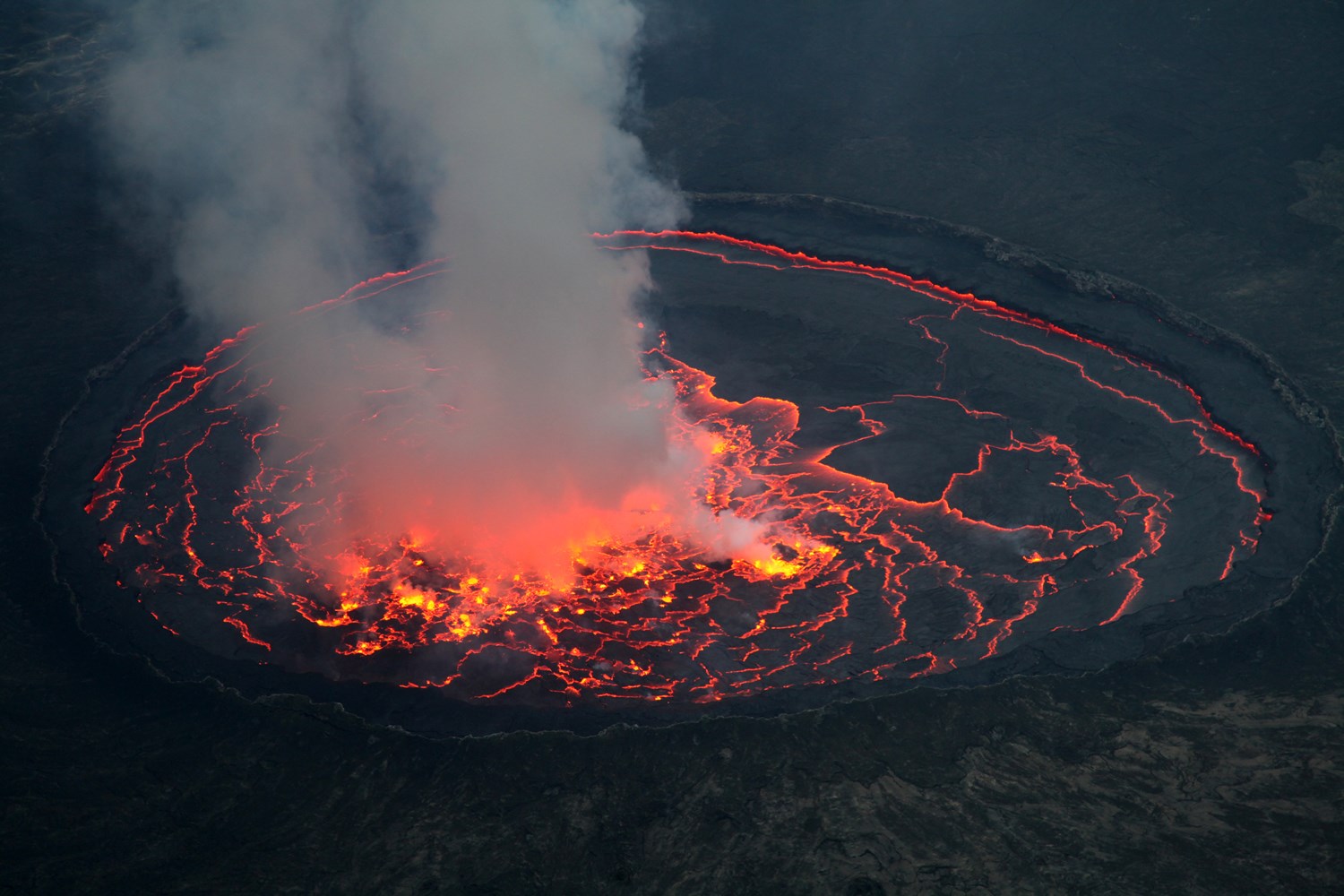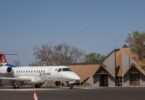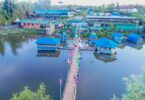At heart of the Congolese-Rwandan border, lies the world’s most magnificent active stratovolcano mountain, Mount Nyiragongo, located in Virunga National Park near Lake Kivu on the eastern part of DRC Congo bordering Rwanda on the west.

An aerial view of Lake Kivu in DRC Congo – Africa Travel Resource
Mount Nyiragongo has earned a reputation as Africa’s and the world’s most active and biggest lava lake measuring 1.2 km in diameter. The lava flows just like water when the lake drains and its disastrous nature was witnessed 17 years ago (2002) when the lava meandered to Goma town which is situated in Virunga Province and displaced 200,000 people in just 30 minutes.

Mt Nyiragongo which is the as the world’s most active and biggest lava lake – Never Ending Footsteps
Over the years though, scientists have not been able to study much about the active volcano due to the heightened political instability in the region but from history, the lava lake in Congo has had two disasters of international magnitude.
The lake is estimated to be 600 metres deep and contains lava flow which moves relatively slowly at about 10km/hr once the volcano erupts.

A night vision of the Nyiragongo Volcano, Virunga National Park – Youtube
In the few studies conducted on this lava from Nyiragongo, it has been found out that it has less viscosity and is highly alkaline making it flow very fast at a speed of 97km/hr which explains why it wiped out Goma town. The fact that the lava lake is deep also contributes to the production of large quantities of lava whose flow becomes quite easy.

Goma Town, beneath the active Volcano in Democratic Republic of Congo, Africa – We Love Cycling
History has it that in 1977, the crater wall but and the lava lake ruptured sending lava to the bordering forests and villages at a speed of 100km/hr which obliterated everything in the north, south and west of Nyiragongo before finding its way to nearby town where 300 people were burnt to death and thousands displaced.

The steep last section of the Nyiragongo volcano trek – Bizarre Globe Hopper
Though it could be tempting to climb the volcano and capture the real moments as of swirling lava; it is a dangerous affair that is highly discouraged because the walls of the volcano could rupture unexpectedly.
#SeeAfricaToday








